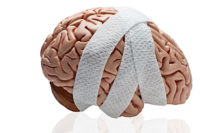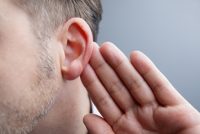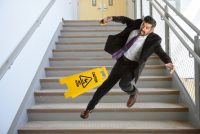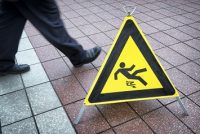Category: Injuries and Illness
Modern safety management goes beyond covering traditional workplace accidents to now being equally concerned with illnesses caused on and even off the job. This section will explain what you need to know to avoid both injuries and illnesses, and to track your progress in reaching this goal.
Free Special REport: Does Your PPE Program Meet OSHA’s Requirements?
Whenever a worker is injured, it is important to get him or her back on the job as soon as possible. This holds down your days away from work/restricted/transferred (DART) rate, minimizes the impact on your X-mod, and decreases the chance of a long-term or permanent disability claim. Most workers wish to return to their […]
Many industries are paying increased attention to the potential health effects of minor traumatic brain injuries (MTBIs), which were once called “concussions.” The long-term health effects of these injuries were first observed in military servicemen and veterans and in professional athletes, but they can occur in any industry and are common in construction. Risk factors […]
When an athlete suffers a blow to the head that results in temporary confusion or changes in perception (for example, double vision), we often say he has “had his bell rung.” The analogy is apt; what has happened in those cases is that the brain has been violently tossed around inside the skull, much like […]
Are your workers good with their hands? Very few jobs can be done with no hands. For example, the U.S. military has very specific requirements for enlistees, who are disqualified for most partial finger amputations and any scars, deformations, weaknesses, or paralysis that would prevent them from serving effectively.
You may fault workplace exposure for your hearing loss. But the problem could be daily sounds you encounter off the job. Learn more about the impact of daily noise exposure on your hearing.
In construction, unguarded openings and edges are common. Regardless of whether the hazard exists on the roof of a completed home, at the edge of an open excavation, or along the leading edge of the upper floor of an office building under construction, construction employers have an arsenal of tools available to identify and protect […]
When a worker’s foot contacts an object, or drops unexpectedly to a lower level, the worker may be thrown off balance too far to recover, resulting in a trip, followed by a fall. Although they’re played for comedy on TV and in the movies, these falls can result in disabling injuries and death.
In 2014, falls were the third leading cause of unintentional death in the United States, causing nearly 32,000 deaths, according to the National Safety Council’s 2016 Injury Facts®. In general industry, slips, trips, and falls cause the majority of injuries and 15% of accidental deaths, and in the construction industry they are the leading cause […]
There’s relief in sight—both physical and legal—for United Airlines’ baggage handlers at New Jersey’s Newark Airport. According to OSHA, United baggage handlers reported at least 622 musculoskeletal injuries from 2011 to early 2015. Learn more about this significant job safety settlement.
Welders exposed to low levels of manganese showed signs of neurological problems that have experts concerned. Keep reading for details.










